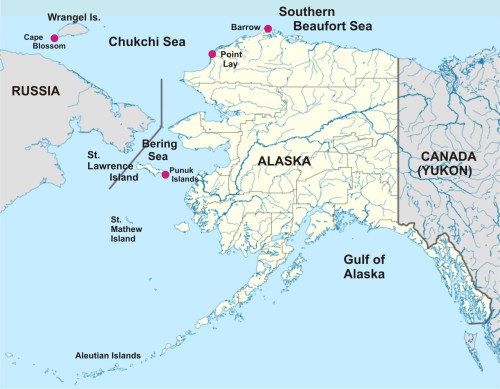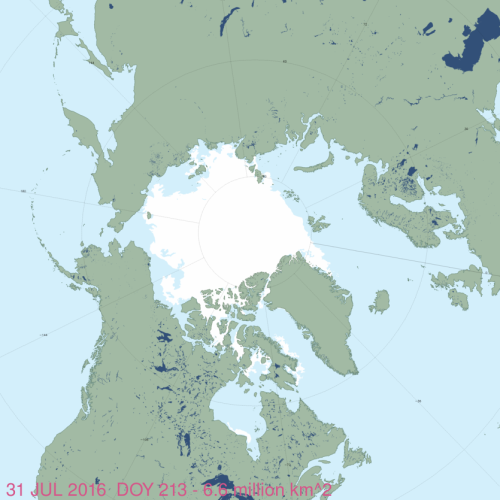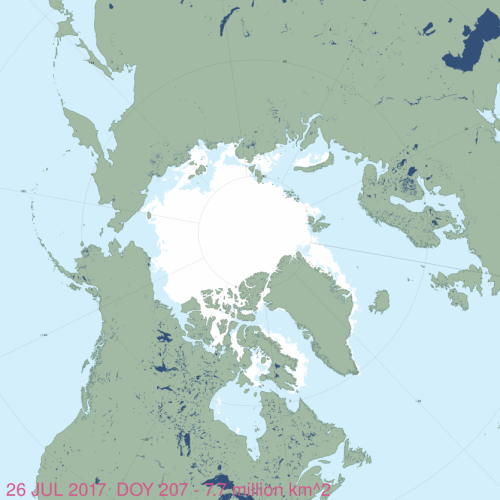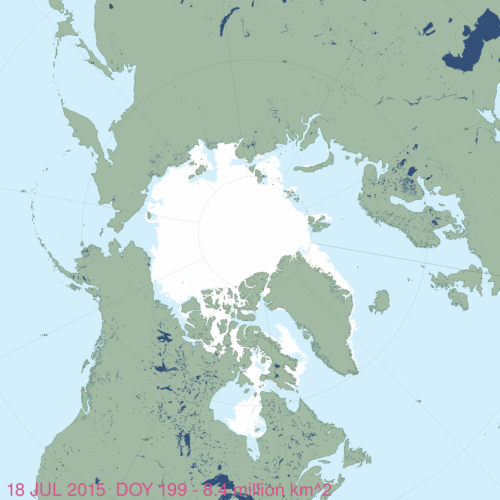 This year’s baseless media frenzy over walrus survival and loss of summer sea ice blamed on human-caused global warming was initiated by a press release from US Fish and Wildlife Service (USFWS) last week (16 August 2017, pdf here: “Pacific walruses haulout near Point Lay earlier than in previous years“). Quote below, my bold:
This year’s baseless media frenzy over walrus survival and loss of summer sea ice blamed on human-caused global warming was initiated by a press release from US Fish and Wildlife Service (USFWS) last week (16 August 2017, pdf here: “Pacific walruses haulout near Point Lay earlier than in previous years“). Quote below, my bold:
In the first week of August, several hundred Pacific walruses were observed on a barrier island near the Native Village of Point Lay, a small, Iñupiaq community on the northwest coast of Alaska. This is the earliest date yet for the haulout to form…This year, sea ice has retreated beyond the continental shelf earlier than in previous years
But is this all true? In a word, no — and it didn’t take much research to uncover the truth.
UPDATE 24 August 2017: A few minutes after this post was published, I became aware that just yesterday, 20 conservation activist organizations, lead by the Center for Biological Diversity (who led the polar bear listing charge) issued a press release regarding a letter (pdf here) pressuring the US Fish and Wildlife Service to list Pacific walrus as threatened or endangered under the Endangered Species Act. Apparently, a decision must be made by the end of September on whether to actively list walrus or not. The text below has been amended to reflect this development.
Oddly, none of the photos provided by USFWS are of this year’s haulout, which would have shown how much less spectacular this haulout was than previous events. This year’s haulout started with several hundred animals and grew to about 2,000 over the next week — nothing like the enormous haulouts of a few years ago when up to 35,000 animals look to shore (2014 and 2015). The media, of course, grabbed the press release bait and hyped it further, with no fact checking evident in their stories:
CBC, 17 August 2017: Loss of sea ice leads walruses to early appearance in Alaska
InsideClimateNews, 17 August: As Arctic Sea Ice Disappears, 2,000 Walruses Mob Remote Alaska Beach
Alaska Dispatch News, 17 August: Walrus haulout in Northwest Alaska forms at earliest date ever recorded
Fox News, 21 August: Walruses show up early in Alaska as ice recedes
SitNews (Sitka, AK), 17 August: Pacific walruses haul out near Point Lay earlier than in previous years
Smithsonian Magazine, 21 August: Melting Sea Ice Forces Walruses Ashore in Earliest Gathering Yet Observed

Really, the only part of this story that vaguely qualifies as news is the date of early August for the haulout at this location. “Earliest date yet” for a haulout at Point Lay (see map above) sounds significant but USFWS doesn’t say when such haulout records began. Do they mean 2007, as mentioned in the text, or some other year?
“The big Point Lay gatherings have happened almost every fall since 2007, a year notable for sea ice retreat.”
‘Earliest in ten years’ is not the same as ‘earliest ever.’
How much earlier was the 2017 event and did it really correlate with sea ice levels? None of the reporters seem to have asked, so I had to find the answer myself.
Pacific walrus females feed in the summer in relatively shallow water of the Chukchi Sea. If there is sea ice available, they use ice as a platform from which to feed and nurse their young — but if there is no ice, they gather on shore and use the beach as a platform. They’ve been doing this for centuries, if not millennia. In recent years there has been little to no ice in the southern Chukchi from at least early August onward, but was the ice retreat this year especially early, as USFWS claims?
Last year there was virtually no ice in the southern Chukchi Sea by the end of July (see map below) but oddly, walrus did not come ashore at Point Lay until the first week in October. A relatively small herd of about 6,000 walruses came ashore on 7 October 2016 and left a week later.

This year, a similar level of ice cover in the Chukchi Sea was reached only a few days earlier, about 26 July (see map below), yet USFWS biologists concluded that sea ice conditions were what prompted a few hundred walrus to come ashore in the first week of August and that the event was so significant that it warranted a press release.

But in 2015, a very large herd (about 35,000, virtually the same size as the 2014 haulout) came ashore at Point Lay in the third week of August — only two weeks later than this year — even though sea ice cover in the southern Chukchi had virtually disappeared by mid-July (see map below). In other words, the ice disappeared earlier in 2015 than it did in 2017 (so 2017 wasn’t the earliest in recent years) but a walrus herd came ashore later in 2015 than it did in 2017 (lack of sea ice did not seem to be the trigger to go ashore in 2015).

Bottom line: Blaming Pacific walrus summer haulout phenomena on lack of sea ice cover due to human-caused global warming just doesn’t hold water: this year’s haulout was earlier than 2015 by only two weeks and Chukchi Sea ice levels did not drop earlier in the season than other recent years (you can check this yourself here).
But USFWS and conservation activists are still pushing to get walrus on the US Endangered Species list (see letter from Center for Biological Diversity dated 23 August 2017 here) and this kind of hype seems to be part of their strategy. However, a critical look at such walrus events shows there are more significant factors at play than sea ice (like population size), which I’ve written about in detail previously in fully referenced blog posts and a summary paper.
Have a look and decide for yourself: here’s my post announcing the 2014 summary paper about the walrus haul out phenomenon (pdf here). My GWPF video is below and a list of previous walrus posts is here.
Read more at Polar Bear Science



















And there’s some nit-wit who said a Border Fence would BLOCK BIRDS AND BUTTERFLIES from MIGRATING the Stupidity of Liberals is so amazing